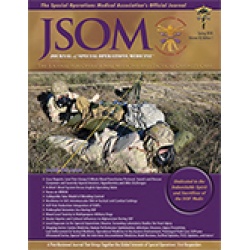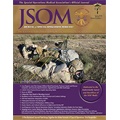Bringing Resuscitative Endovascular Balloon Occlusion of the Aorta (REBOA) Closer to the Point of Injury
Pasley JD, Teeter WA, Gamble WB, Wasick P, Romagnoli AN, Pasley AM, Scalea TM, Brenner ML 18(1). 33 - 36 (Case Reports)
Background: The management of noncompressible torso hemorrhage remains a significant issue at the point of injury. Resuscitative endovascular balloon occlusion of the aorta (REBOA) has been used in the hospital to control bleeding and bridge patients to definitive surgery. Smaller delivery systems and wirefree devices may be used more easily at the point of injury by nonphysician providers. We investigated whether independent duty military medical technicians (IDMTs) could learn and perform REBOA correctly and rapidly as assessed by simulation. Methods: US Air Force IDMTs without prior endovascular experience were included. All participants received didactic instruction and evaluation of technical skills. Procedural times and pretest/posttest examinations were administered after completion of all trials. The Likert scale was used to subjectively assess confidence before and after instruction. Results: Eleven IDMTs were enrolled. There was a significant decrease in procedural times from trials 1 to 6. Overall procedural time (± standard deviation) decreased from 147.7 ± 27.4 seconds to 64 ± 8.9 seconds (ρ < .001). There was a mean improvement of 83.7 ± 24.6 seconds from the first to sixth trial (ρ < .001). All participants demonstrated correct placement of the sheath, measurement and placement of the catheter, and inflation of the balloon throughout all trials (100%). There was significant improvement in comprehension and knowledge between the pretest and posttest; average performance improved significantly from 36.4.6% ± 12.3% to 71.1% ± 8.5% (ρ < .001). Subjectively, all 11 participants noted significant improvement in confidence from 1.2 to 4.1 out of 5 on the Likert scale (ρ < .001). Conclusion: Technology for aortic occlusion has advanced to provide smaller, wirefree devices, making field deployment more feasible. IDMTs can learn the steps required for REBOA and perform the procedure accurately and rapidly, as assessed by simulation. Arterial access is a challenge in the ability to perform REBOA and should be a focus of further training to promote this procedure closer to the point of injury. Keywords: hemorrhage control; independent duty medical technician; resuscitative endovascular balloon occlusion of the aorta; REBOA


 Español
Español 




